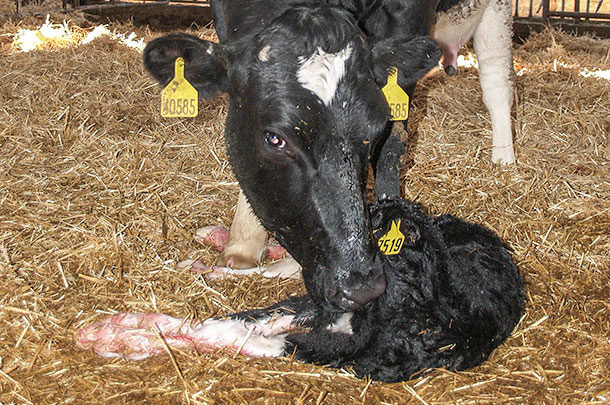Reproductive synchronization protocols, along with renewed attention to detail, are integral parts of dairy reproductive success.The development of these protocols and their rapid on-farm adoption over the past 20 years are key reasons why 21-day pregnancy rates no longer languish at 14 percent.
Instead, it’s common for pregnancy rates to flourish in the 25 to 30 percent range and even higher on an increasing number of operations.
As the industry continues to evolve, producers continue to search out technologies that push herd reproductive success to greater heights.
Animal monitoring systems that track activity and rumination time are quickly becoming the tool of choice for dairies seeking to fine-tune their reproductive management programs. That’s because the predictive, actionable data generated by these systems enable users to manage cows individually while boosting overall herd performance.
The strong tie between rumination time and cow performance means rumination monitoring can provide an early window for diagnosis – on an animal, group or herd basis – or a means to evaluate management decisions and protocol compliance.
These systems track each day’s rumen function and compare it to the individual animal’s average. These comparative rumination data can help with early identification of potential issues before they become more serious problems.
This information offers producers opportunities to hone in on reproductive challenges and aggressively target protocols in a prescriptive way to address specific issues – like anovular cows, for example. Or the data can provide a basis for adapting reproductive management strategies.
For instance, recent research suggests these systems are reliable indicators of when to time inseminations. Furthermore, the system sensors take the “human factor” out of heat detection and monitor animals 24 hours a day, seven days a week, not just when people have time to visually observe cows.
California experience
When one particular dairy invested in its ai24/SCR Dairy rumination monitoring system in October 2014, its goal was to improve transition cow health and management. And it did.
After system installation, fresh cow treatment incidence and treatment cost dropped dramatically. Today, cows spend much less time in headlocks waiting for attention, and they navigate the transition period much more smoothly. As a result, employees and cows are all better able to manage their time and increase productivity.
The 4,200-cow dairy also realized a significant boost to its reproductive program. Prior to the investment in animal monitoring technology, the dairy followed a PreSynch/Ovsynch protocol with timed A.I.
Its 21-day pregnancy rate averaged a highly respectable 22 percent, with 60 to 65 percent of the herd pregnant at pregnancy check. The dairy also cherry-picked cows that showed estrus during the synch protocol, breeding about 80 cows a month off of these “heats.”
Though they were doing well with this program, the dairy discovered it could do better with enhanced information that resulted in sound, more informed decisions regarding its overall breeding strategy and reproductive management.
Once cows began to be monitored by the system, those inseminated due to cherry-picking increased from about 80 per month to 180 to 200 cows per month. This significantly reduced the number of cows on the full protocol, saving about $5 per cow with no negative effects on conception rate. With reports in hand, employees were more efficient because they were spending less time on heat detection.
Cows as individuals
In addition, since the dairy had constant, reliable data, it began to adjust protocols. They can now differentiate between the cows that were really in heat and those that are anovular, which are enrolled into a CIDR-synch protocol.
“The nice thing is we’re looking at individual cows,” the dairy’s manager adds. “We can do what needs to be done right away rather than guessing and waiting for 35 days (at pregnancy check) to see what’s going on with her.”
As a result of these shifts, the dairy now reports a 26 percent pregnancy rate with 70 to 75 percent of the herd pregnant at pregnancy checks. Correspondingly, average days open have decreased, resulting in savings on feed. In addition, the dairy has also been able to maintain herd size while removing more non-productive animals from the herd.
Level up
As this dairy has found, animal monitoring systems help take dairy reproductive programs to the next level. Because of the precise nature of the data and the ability to monitor individual cows, cohort groups, pens and the entire herd all at once, dairies can focus on what’s truly happening with animals.
They can rely on the integrity of the data and use it as a foundation to make more informed decisions, and then assess whether the resulting actions are effective and beneficial. The information removes much of the guesswork and allows dairies to continue to move forward rather than wait to collect data on events that occurred in the past.
In that manner, animal monitoring systems are revolutionizing the way dairies make decisions and manage herds. PD
References omitted due to spacebut are available upon request. Click here to email an editor.

-
Glaucio Lopes
- Large Herd Manager and Repro Specialist
- SCR Dairy Inc.
- Email Glaucio Lopes





